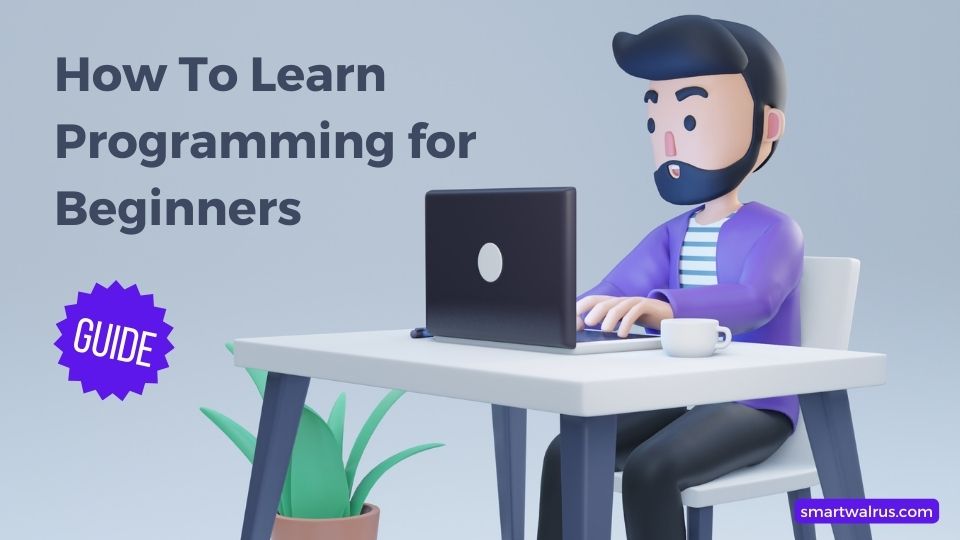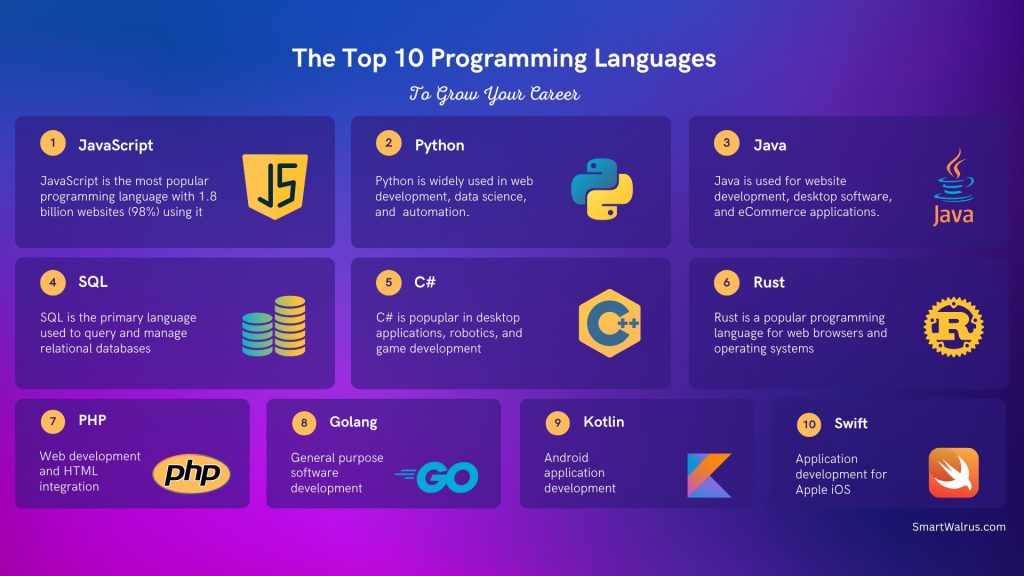The Ultimate Guide To Learning Programming For Beginners

Are you interested in learning programming? If so, you’ve come to the right place! In this article, we’ll be discussing the basics of computer programming and how you can get started on your journey to becoming a programming pro!
What Exactly is Programming?
So, what exactly is computer programming? In its simplest form, programming is the process of designing one or more algorithms for a computer to use and completing instructions for telling the computer what to do with those algorithms.
In other words, it’s a way of giving computers specific instructions on how to complete certain tasks. By learning to program, you can create your own computer games, websites, and even apps.
The Challenges of Learning Programming
If you want to learn to program, there’s no better way than to jump right in and start coding! But before you do, there are a few things you should know.
First, programming is all about solving problems. So, when you’re stuck on a problem, don’t be discouraged if you don’t understand everything right away. Just keep practicing and you’ll eventually get the hang of it.
Second, programming is a lot like learning a new language. So, just like you’re studying a new language, there’s logic, structure, and new symbols. And just like you’re reading a phrasebook, you’ll sift through tons of documentation too.
10 Tips for Learning Programming
1. Decide Which Language You’d Like to Learn
Before you get into the details of learning programming, you first need to decide which language you’d like to learn. Unfortunately, there is no one perfect language for everyone.
Factors such as your background, skill level, and career goals affect which language will best suit you. Some common languages used for general coding are C++, Java, and Python.
But before diving into any specific languages, it’s important to understand the basics of computer programming. You’ll learn how programmers write software, as well as the codes and languages they use to create programs.

2. Learn the Basics of Computer Programming
As a beginner, it’s a good idea to start with a general overview of computer programming. Don’t worry if the concepts seem confusing at first. As you continue to learn and practice, you’ll quickly gain a better understanding of the subject.
Computer programming involves writing instructions for computers. Each programming language is used for specific tasks, such as writing software for different operating systems or programming for the web.
What’s common in all programming languages are concepts like:
3. Try Coding Yourself
Once you have a general understanding of computer programming, it’s time to try coding yourself. You can do this in a number of ways, including writing your own code or practicing with a programming puzzle. Both of these activities will help you learn the basics of programming languages and get a feel for the process of writing code.
Writing your own code can be done with a simple text editor. You may want to try a website like Codepen to write code and share your work online. Be sure to read through the comments to get ideas for how to improve your code.
If you want to try coding puzzles, there are many websites where you can solve logic puzzles and challenges related to programming. Coding puzzles like the ones on Techie Delight are fun ways to practice coding and may even help you decide which programming language you want to learn.
4. Get a Little Help From a Bootcamp
If you’re struggling with the basics of computer programming, you may want to try a boot camp type of class. A coding boot camp is a short-term, intensive training program that teaches people the basics of coding and prepares them for a career in the tech industry.
Bootcamps typically last between 12 and 24 weeks and are designed to give students the skills they need to get a job as a junior developer. They can be a great way to get extra support in the early stages of learning programming.
The best coding boot camps will provide you with a clear learning path that helps you progress at your own pace. You may be required to complete certain modules or assignments before moving on to the next set of content. It’s important to keep track of your progress and set aside time each day to study.
5. Take an Online Coding Course
You can also try taking an online course to learn to program. Online courses are often more in-depth than boot camps and can be a good choice if you want a more structured approach to programming.
You can find online courses on a variety of programming languages, including C++, Java, Python, and R language. Many online courses include online textbooks, quizzes and assessments, community interaction, and even project work.
In order to get the most out of these programs, it’s a good idea to set aside time each week to complete coursework. Online courses are generally self-paced, meaning that you can work through the course material at your own pace. This may be both a positive and a negative, as it allows you to move at your own speed but may also make it easier to procrastinate.
6. Try Live Coding Classes
Live coding classes are a fun way to get hands-on experience with programming. In these courses, you’ll learn how to write code while completing challenges and projects.
You might code with a group of people or a single instructor. Live coding classes are especially great for visual learners and can be a fun way to meet new people. Live coding classes are most often hosted online and can be a great option for those who want a social experience.
The best way to find live coding classes is to search online. Many websites host these events and offer them at various times throughout the week. You can find live coding classes for a variety of different programming languages.
7. Look for Left-Brain Learning Activities
While it’s important to practice the basics of computer programming, it’s also important to challenge your brain. Learning programming also strengthens the left side of your brain, which is the side of the brain associated with logic, reasoning, and language.
Because programming engages both hemispheres of your brain, it’s sometimes referred to as a “left-brained” activity. There are many activities you can do to strengthen your left brain. For instance, the following activities are good ways to challenge your left brain:
8. Find Out More About Programming Careers
Now that you know all about how to learn programming, it’s a good idea to find out more about programming careers. Knowing what types of companies hire programmers and what type of jobs they have can help you decide which programming language you want to learn.
For example, this UX Front End Engineer job at Google requires experience in several languages including Java, C/C++, Python, Ruby, and JavaScript frameworks like Backbone, Angular, and Ember.

So if you’re looking to get a job as a UX Engineer, these are potentially some of the programming languages you should consider learning.
9. Start a Programming Project
You don’t need to become a computer programmer or have any programming experience to start a programming project. It’s easy to set up a website and write some code to make it run on your computer.
Whether you’re interested in building games or creating web apps, there are currently plenty of opportunities for people to get involved. Here are some of the best opportunities:
10. Complete an Internship Program
If you’d like to use a specific language for your career, you may be able to get experience by completing an internship or apprenticeship. These internships can be paid and unpaid positions, but they can be beneficial for those looking to get a job in the field.
First, they allow you to work with professional developers and learn about the industry. Meanwhile, you can earn valuable skills that will help you land a full-time job.
Secondly, internships provide students with hands-on experience, exposure to real-world applications, and the opportunity to work alongside professionals. They also provide a chance for students to explore career paths, meet potential employers, and develop valuable work experience.
The Ultimate Guide To Learning Programming For Beginners
In this article, we talked about the importance of learning programming, how to decide which language to learn, and the basics of computer programming.
Then, we discussed the different ways to try coding yourself and get a little help from boot camps and online classes. Finally, we talked about the different types of programming languages and how to find out more about programming careers.
Now that you know all about how to learn programming, there’s no reason why you can’t start your journey to become a coding master! Do you have any recommendations that we might have missed? Please let us know in the comment section below.

Related Programming
Top 10 Programming Languages to Learn and Why
What Can You Do With a Computer Science Certificate
What Is a Computer Scientist?
10 VR Programming Languages for Developing VR Applications
The Benefits of Learning How to Code: Unlock Your Potential
The Ultimate Guide To Learning Programming For Beginners
15 Careers That Use Python Programming
5 Best Modded Minecraft Hosting Providers